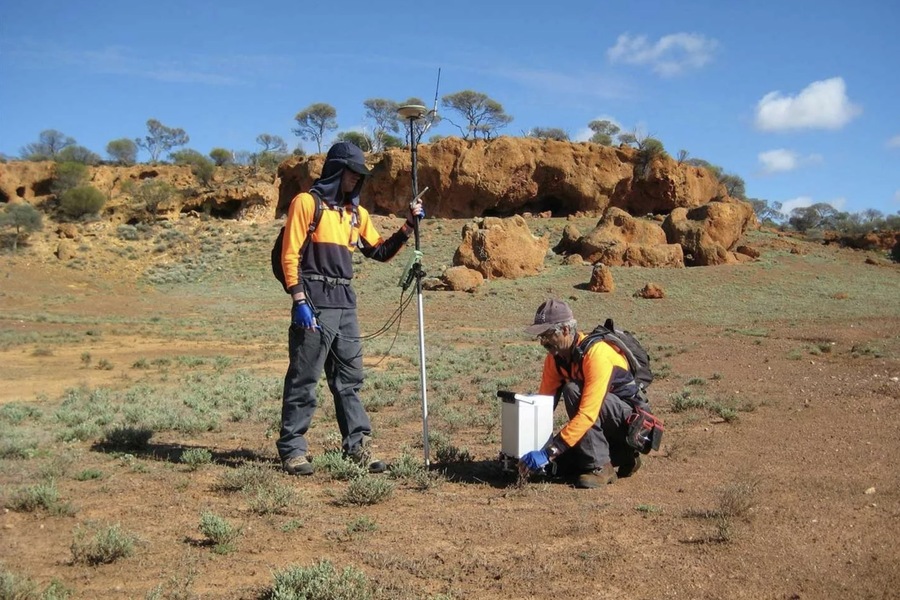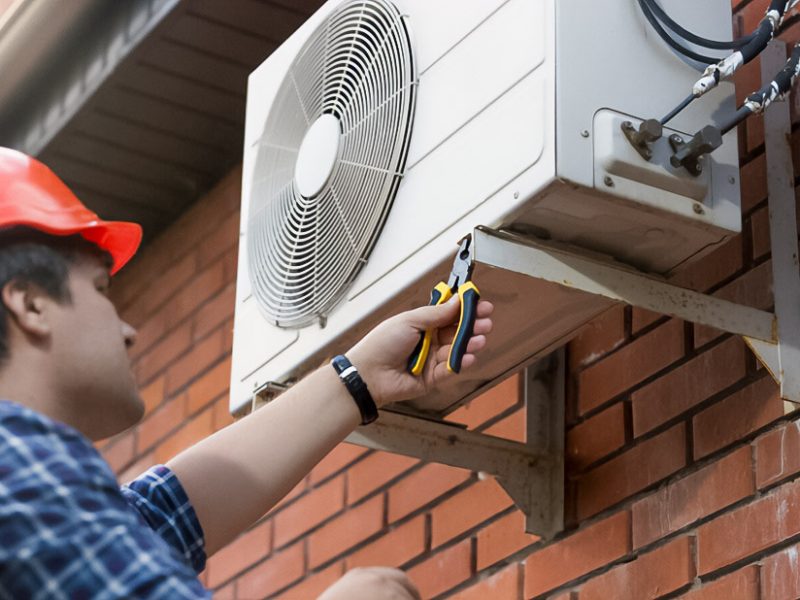Geophysical surveys play a fundamental role in modern construction projects, offering invaluable insights into the subsurface conditions of a construction site. These surveys allow engineers and architects to make informed decisions about site selection, design, and construction techniques. Companies like Smart Projects specialize in conducting these surveys, ensuring that the data obtained helps guarantee the long-term stability and safety of structures, making geophysical surveys an indispensable part of construction planning.
In this article, we will explore in greater detail why geophysical surveys are carried out, the specific tasks they perform, the methods used, and the importance of obtaining accurate results. We will also touch upon the practical steps involved in conducting these surveys, their relevance in various industries, and examples of real-world applications.
Why Geophysical Surveys Are Carried Out
The primary goal of geophysical surveys is to gather data about the physical properties of the ground beneath a construction site. This information is critical for understanding various aspects of the land, such as the soil’s ability to bear weight, the presence of underground utilities, and the risk of natural hazards. Key reasons why geophysical surveys are conducted include:
- Site Evaluation: Before any construction can begin, a comprehensive assessment of the site’s geological and geotechnical conditions is necessary. Geophysical surveys offer a cost-effective and non-invasive method to determine the soil’s characteristics, rock formations, and groundwater conditions without the need for extensive drilling.
- Risk Mitigation: By understanding the geophysical properties of a site, potential hazards like sinkholes, landslides, or underground voids can be identified early in the process. This allows for better planning and the implementation of preventive measures to avoid structural failures or unexpected delays during construction.
- Environmental Impact: Geophysical surveys help in identifying areas with environmental concerns, such as contaminated soil or groundwater. This ensures that the construction complies with environmental regulations and prevents long-term negative impacts on the ecosystem.
- Economic Efficiency: Conducting thorough geophysical research minimizes costly surprises during construction. By mapping out underground obstacles and weak zones, project managers can avoid expensive rerouting, delays, or reconstruction efforts.
- Compliance with Regulations: Many countries and municipalities require geophysical surveys as part of their construction permitting process. These surveys ensure that the planned construction adheres to local zoning laws and building codes, particularly in areas prone to geological hazards.

Tasks Performed by Geophysical Surveys
The data obtained from geophysical surveys serves several important purposes, particularly in the construction industry. The tasks performed by these surveys can be grouped into several categories, each of which contributes to the overall understanding of the site:
- Topographical and Subsurface Mapping: Geophysical surveys map the surface and subsurface features of a site, providing detailed information about its topography, existing structures, and underground utilities. This is essential for the planning and design phases, ensuring that new structures can be integrated smoothly into the environment.
- Void Detection: The presence of underground voids, such as caverns or old mine shafts, can significantly affect the stability of a structure. Geophysical surveys can detect these voids, enabling engineers to adjust the foundation design or fill these areas to prevent subsidence.
- Soil Characterization: Soil is the foundation of any structure, and understanding its properties is vital to ensuring that the building will stand the test of time. Geophysical surveys provide detailed information about the composition, density, and load-bearing capacity of the soil. This data informs decisions about the type of foundation that should be used.
- Groundwater Analysis: Water plays a critical role in the stability of the soil. High groundwater levels can lead to flooding, soil liquefaction, or erosion. Geophysical surveys help to map the groundwater table, providing essential information for drainage planning and flood prevention.
- Landslide and Karst Detection: In regions prone to landslides or where karst formations are present, geophysical surveys can detect early signs of geological instability. Identifying these hazards beforehand allows for the implementation of preventive measures, such as retaining walls or subsurface drainage systems.
- Cultural Layer Identification: In areas with archaeological significance, geophysical surveys help to identify cultural layers beneath the surface. This ensures that any construction work preserves important historical or archaeological sites, avoiding potential legal and ethical issues.
Methods Used in Geophysical Surveys
Different types of geophysical survey methods are used depending on the site conditions and the specific data that needs to be collected. The most commonly used methods include:
1. Seismic Exploration:
– Principle: Seismic surveys involve the generation of controlled seismic waves that travel through the ground and are reflected back to the surface. By analyzing how these waves behave as they travel through different types of soil and rock, engineers can gain insights into the subsurface structure.
– Techniques: The two primary seismic techniques are seismic refraction and seismic reflection. In seismic refraction, the time it takes for seismic waves to travel through different layers is measured, while in seismic reflection, the reflected waves are analyzed to create a detailed map of the subsurface.
2. Electromagnetic Surveys:
– Principle: Electromagnetic (EM) surveys measure the conductivity of the subsurface materials by generating electromagnetic fields and observing how they interact with different soil and rock types.
– Techniques: Methods like electrical resistivity tomography (ERT), ground penetrating radar (GPR), and magnetometry are commonly used to detect underground structures, map soil moisture, and identify areas of contamination.
3. Gravity Surveys:
– Principle: Gravity surveys detect small variations in the Earth’s gravitational field caused by differences in the density of subsurface materials. By measuring these variations, geophysicists can infer the presence of voids, rock formations, or other geological features.
4. Geophysical Logging:
– Principle: Geophysical logging involves lowering instruments into boreholes to measure the physical properties of the soil and rock. This method provides high-resolution data about the subsurface layers and can identify features like fractures, voids, and variations in rock density.
– Techniques: Common logging techniques include sonic logging, gamma-ray logging, and electrical resistivity logging.

Practical Steps in Conducting Geophysical Surveys
The process of conducting geophysical surveys can vary depending on the complexity of the site and the specific goals of the project. However, the typical steps involved in a geophysical survey are as follows:
- Preliminary Research: Before conducting a survey, it is essential to gather and review any existing data about the site. This may include geological maps, previous surveys, or environmental reports. This preliminary information helps in designing the geophysical survey and determining which methods to use.
- Fieldwork: The fieldwork phase involves deploying the necessary equipment to the site. Depending on the methods being used, this could involve setting up seismic sensors, laying out electromagnetic coils, or drilling boreholes for geophysical logging.
- Data Collection: Once the equipment is in place, the actual data collection begins. This involves generating seismic waves, measuring electromagnetic fields, or recording changes in the gravitational field. The data is then transmitted to a central monitoring system for analysis.
- Data Analysis: The raw data collected during the fieldwork phase is processed and analyzed to create detailed maps and models of the subsurface. Advanced software tools are often used to visualize the data and identify any anomalies or areas of concern.
- Reporting and Recommendations: The final step is to compile a report that summarizes the findings of the survey. This report typically includes maps, charts, and detailed explanations of the subsurface conditions. Recommendations are provided for the design and construction of the building, as well as any potential risks or hazards that need to be addressed.
Importance of Accurate Survey Results
Accurate geophysical surveys are crucial for the success of any construction project. These surveys provide the information needed to design safe and durable foundations, identify potential hazards, and minimize construction delays. In many cases, the data obtained from geophysical surveys can eliminate the need for more invasive and costly geological or hydrogeological studies.
In regions like the UAE, where the terrain can be challenging due to desert conditions, high groundwater levels, and the risk of sinkholes, geophysical surveys are particularly important. By working with specialized companies like Smart Projects, builders and developers can ensure that their projects are based on reliable, high-quality data.
Conclusion
Geophysical surveys are a key element of modern construction, providing essential data about the subsurface conditions of a site. Whether it’s detecting underground voids, mapping groundwater levels, or identifying potential landslide risks, these surveys ensure that construction projects are built on a solid foundation. By employing advanced technologies such as seismic exploration, electromagnetic surveys, and geophysical logging, engineers can make informed decisions that enhance the safety, efficiency, and longevity of their structures.
In today’s construction industry, where precision and safety are paramount, geophysical surveys are not just a luxury—they are a necessity.

Baseball fan, mother of 2, DJ, vintage furniture lover and creative consultant. Making at the intersection of art and programing to craft experiences both online and in real life. I’m a designer and this is my work.


